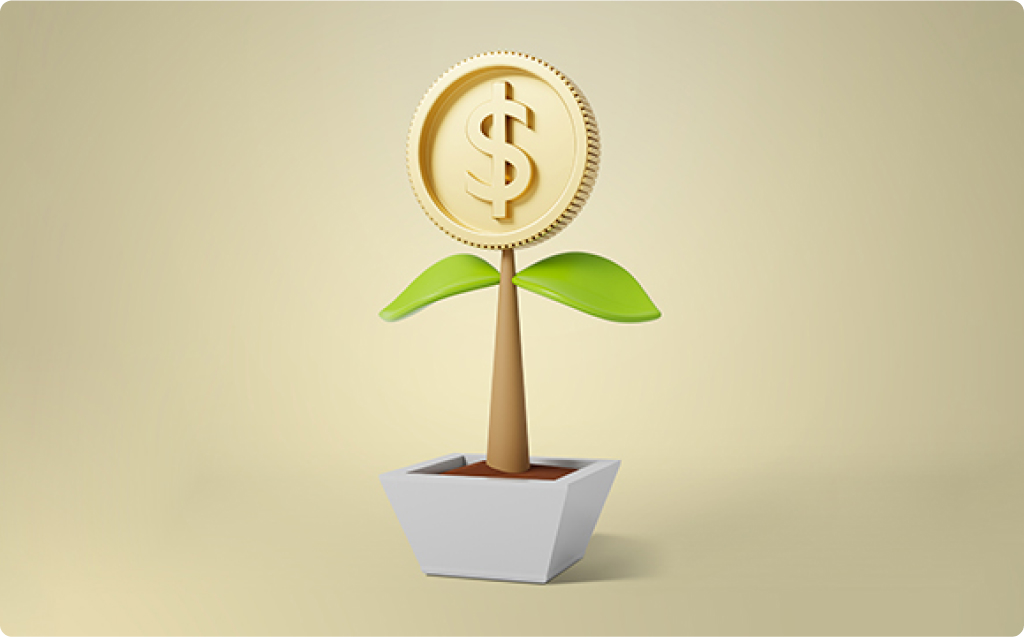
What Is the Difference Between Saving and Investing?
Many people consider saving and investing money to be the same. There are a few similarities between the two but learn what differentiates them by reading this blog.
What is saving?
The term saving means when you safely put money away for short-term goals. Typically, you’ll not want to put your savings at risk of losing their value. Instead, you’ll want to keep the money safe, easily accessible, and ready to use when needed.
Here are a few examples of savings:
- Bank savings accounts
- Certificates of deposit (CD)
- Money Markets
- Emergency funds
- Christmas shopping accounts
- Piggy banks
There’s no denying that you should have savings on hand, but asking yourself the following questions is as critical before you start saving:
1. Do I have any outstanding debt?
Consumer debt often carries a higher interest than that of a savings account. If you have any outstanding medical bills or credit card balances, consider paying them off before you start saving money.
It would be counterproductive to save and earn 1% of interest while paying upward of 20% interest on credit card balances that are due.
So, pay those off and then plan on saving money. You may want to consider debt consolidation if you can’t pay off the debt. For instance, with a personal microloan, you can secure a low rate of interest than a credit card, and you have a clear path to paying off the debt since the loan is for a fixed term
2. Can I afford to save money?
Some experts may want to rephrase this question to ‘Can you afford not to save?’ The truth is that your monthly income, budget, and expenses may not allow you to save money right away.
Analyze your budget to find more ways of saving so you can pay off your debts and start saving money.
Nonetheless, it is good to focus on your saving goals and build an emergency fund to survive difficult days.
What’s the difference between saving and investing?
Investing is for the long-term, unlike saving. In fact, you should invest the money you don’t need for years (maybe decades). Besides, you can put your investment money into riskier vehicles than the money you’re saving for short-term financial needs and goals.
Some examples of investing include:
- Retirement plans
- Peer-to-peer lending
- Stock portfolios
- Real estate
- Cryptocurrency
Investing is crucial to your long-term financial stability and achieving retirement goals, but you need to ask yourself the following important questions before you start investing:
1. Do I have plenty of savings for emergencies?
Experts suggest that couples with two incomes and secure jobs save three months’ worth of expenses, but if one of them is in a less secure job, they should accumulate six months’ worth of expenses in a savings account.
Likewise, individuals and families that rely on a single source of income could benefit from a year’s worth of expenses saved up for difficult days. No matter what your current employment situation is, consider starting a savings account before getting into investing.
2. Am I leveraging my retirement savings?
Generally, the word ‘savings’ is used for money kept aside for retirement, but contributing to a company’s retirement plan or an IRA is an actual investment because of the timetable used for these dollars and inaccessibility to the money while you’re still employed and under a certain age.
Most people’s first investment is through their company’s 401(k) plan. It’s an effortless process that helps reduce the tax burden, and often there’s a company match to help fast-track your retirement savings.
3. When will I need the money I’ll invest?
Asking yourself this question can give you a clearer idea of whether you should invest or save money. If you think you’ll need the money you’ve kept aside for investment in the next five years, save that cash.
Since the market is always volatile, you should keep your money invested for a few years. You could lose your investment money if you don’t give it enough time to grow.
4. What is my risk tolerance?
Investing money usually involves risking your money in the hopes of making exponential growth over the years. If you’re not comfortable with the risks involved with investing, it may not be for you.
One way to go about investing money and suffering minimized risk is with diversified investments.
Endnote
Now that you know the difference between saving and investing, you can choose the option most suitable for your current financial situation.
And, if you want to get started with investing money right away through a trusted microlending platform, where you have the control to set your own terms and fees and an opportunity to earn faster and greater returns, download the Lendee app today.